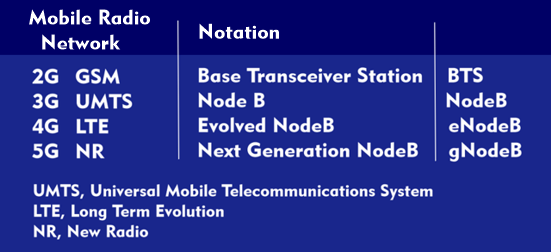base transceiver station (mobile communications) (BTS)
The Base Transceiver Station (BTS) is a component of the Base Station Subsystem(BSS) of a GSM network or a digital cellular network. The task of the BTS station is to establish the radio link to the mobile stations. In addition, the transmit/receive station controls the radio transmission and transmits the signaling information to the base station controller( BSC).
GSM base stations have a transmitting power of 20 W to 50 W in the 900 MHz range, while in the E-network in the 1.8 GHzfrequency range, the transmitting power is 10 W to 20 W. It can transmit 10 to 30 calls simultaneously. In the case of Short Message Service( SMS), the base transceiver station handles message storage and routing, throughput monitoring and load behavior.
The BTS station provides several of the available radio channels in the radio cell. For GSM, 124 radio channels are available, and for DCS 1800, 372 radio channels are available. Of the available radio channels, typically only a few radio channels are installed in a radio cell to avoid interference of radio frequencies with frequencies of neighboring radio cells.
InUMTS, the equivalent component to the radio base station (BTS) is called NodeB( NB), in the SAE architecture of Long Term Evolution( LTE) Evolved Node B(eNodeB) and in 5th generation mobile networks Next Generation NodeB(gNodeB).


